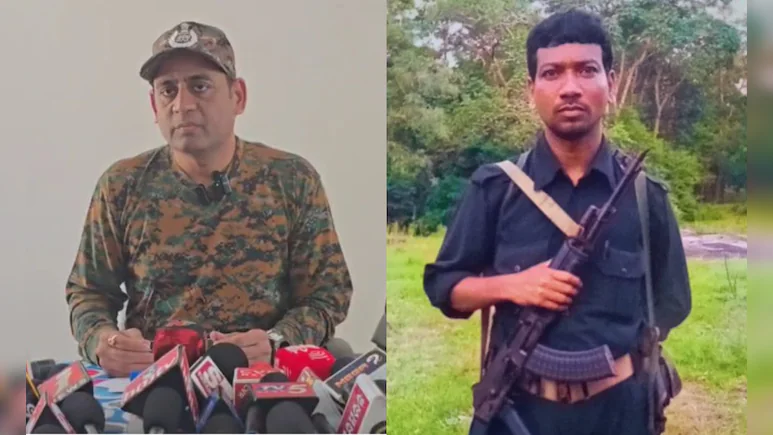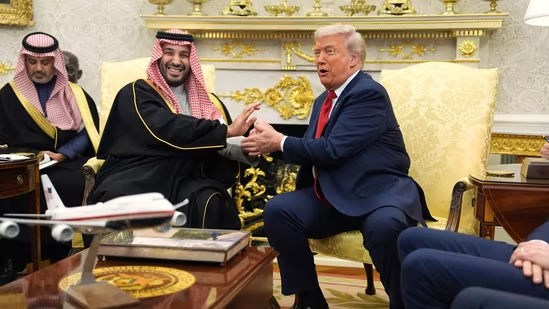Operation Zero Hour: Inside the Mission That Took Down India’s Most Elusive Maoist Commander

On March 15, 2025, a significant intelligence breakthrough finally altered the narrative. For over a decade, Madvi Hidma—the ruthless tactical commander of the People’s Liberation Guerrilla Army (PLGA) Battalion 1—had haunted India’s security grid. Known for orchestrating some of the deadliest Maoist attacks, including the 2010 Dantewada ambush (76 CRPF jawans martyred) and the 2017 Sukma road-opening party attack, Hidma remained a ghost in the jungles of Bastar: feared, invisible, untouchable.
But in early 2025, an intelligence breakthrough changed everything. For the first time, an officer who led the internal intelligence component of the mission has now come forward—revealing how the decade-long hunt finally ended.
The Manhunt Begins: Why Hidma Was India’s Most Wanted Maoist
Madvi Hidma wasn’t just another insurgent. He was a strategic mastermind who combined brutal ambush tactics with deep jungle warfare knowledge. His battalion operated across Sukma, Bijapur, Dantewada, and Abujhmad, the most inaccessible Maoist strongholds.
Security agencies believed that eliminating Hidma would cause a major operational collapse in Maoist military structure. But the challenge was massive—Hidma’s unit rarely used communication devices, frequently changed locations, and moved under dense forest cover.
The officer reveals: “Every attempt to corner him failed because Hidma never stayed in the same place for more than a few hours. He had perfected unpredictability.”
The Breakthrough: An Informant Who Changed the Game
In mid-2024, a deep-cover asset inserted into Bastar brought the first credible lead in years. The asset had managed to enter a lower-rung Maoist logistics network. It was here that intelligence officials learned:
- Hidma had suffered a near-fatal illness in 2023.
- He was operating with a smaller trusted unit of 20–25 fighters.
- His movements were restricted to a narrow corridor between Pameda and Dumbrapara.
This was the window security forces had waited years for.
Operation Planning: 400 Commandos, Zero Noise, No Second Chances
The officer shares that the operation was planned like a “surgical strike inside the jungle.” The idea was to use multi-layered human intelligence, drone surveillance, and silent movement by special forces.
For the final push, the plan involved:
- Teams from CRPF CoBRA units, DRG (District Reserve Guard), and Bastar Fighters.
- Over 400 commandos moving in complete darkness.
- No radio communication until the target was engaged.
- A tight 20 km jungle cordon sealed without alerting Maoist spotters.
The officer reveals: “If even one local spotted us, Hidma would vanish. We had to move like shadows.”
The Encounter: 22 Minutes of Gunfire That Ended an Era
The final engagement took place shortly before dawn. The commandos spotted Hidma’s camp, hidden under thick Sal trees and camouflaged using bamboo.
As forces closed in, Maoists opened fire—triggering a brief but intense gun battle that lasted just 22 minutes.
“Hidma fired first,” the officer confirms, “but he couldn’t escape the perimeter. His fighters were outnumbered, outmaneuvered, and shocked by the silent insertion.”
When the firing stopped, Madvi Hidma lay dead, marking the end of India’s longest Maoist manhunt.
Aftermath: A Turning Point in the Naxal Conflict?
Eliminating Hidma has had deep ripple effects:
- Maoist operations in Bastar have reduced by over 60%, as per internal reports.
- Hidma’s successors do not possess his tactical abilities.
- Recruitment in Sukma and Bijapur has sharply declined.
- Communication intercepts show confusion within PLGA leadership.
A senior officer noted: “With Hidma gone, the Maoist command structure in south Bastar has lost its backbone.”
Why the Officer Chose to Speak Now
The intel officer clarified that he decided to speak publicly only after the government formally confirmed the mission’s success. According to him, public awareness is crucial:
“People must know how many lives were lost fighting this shadow war and how much effort went into neutralizing Hidma.”
He added that the mission’s real heroes were the local tribal commandos who guided teams through difficult jungle terrain.
Conclusion: The Fall of a Phantom
Madvi Hidma’s death represents not just the end of a Maoist commander—it symbolizes a decisive shift in the decades-long conflict in central India.
A man who once dictated the battlefield from the shadows now exists only in intelligence files. And for the officers who hunted him, it marks the closure of a story written in sacrifice, patience, and relentless pursuit.
FOR MORE BLOGS – beyondthepunchlines.com

 Add to favorites
Add to favorites







